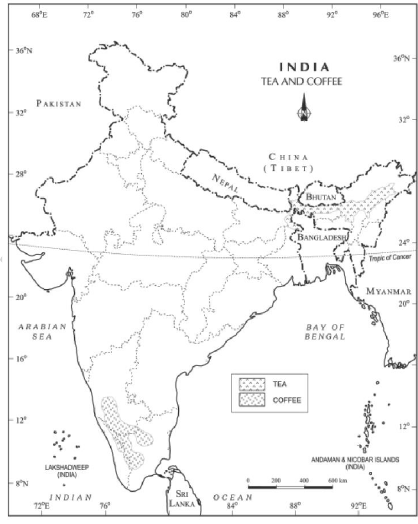1.10. Agricultural Development in India
Agriculture continues to be an important sector of Indian economy. The importance of agricultural sector in India can be gauged from the fact that about 57 per cent of its land is devoted to crop cultivation, whereas, in the world, the corresponding share is only about 12 per cent. Indian agricultural economy has been largely subsistence in nature. After
Independence, the immediate goal of the Government was to increase food grains production by (i) switching over from cash crops to food crops; (ii) intensification of cropping over already cultivated land; and (iii) increasing cultivated area by bringing cultivable and fallow land under plough. Intensive Agricultural District Programme (IADP) and Intensive Agricultural Area Programme (IAAP) were launched in 1950s to improve production. New seed varieties of wheat (Mexico) and rice (Philippines) known as high yielding varieties (HYVs) were available for cultivation by mid-1960s and India took advantage by introducing package technology comprising HYVs, along with chemical fertilizers in irrigated areas of Punjab, Haryana, and Western Uttar Pradesh. This strategy of agricultural development increased the food production at very vast rate; this growth came to be known as Green Revol ution. This strategy of agricultural development made the country self-reliant in food grain production. But green revolution was initially confined to irrigated areas only. This led to regional disparities in agricultural development in the country.

Agro-climatic planning was introduced in 1988 to induce regionally balanced agricultural development in the country. It also emphasised the need for diversification of agriculture and harnessing of resources for development of dairy farming, poultry, horticulture, livestock rearing and
aquaculture. However, lack of development of rural infrastructure, withdrawal of subsidies and price support, and impediments in availing of the rural credits may lead to inter-regional and inter-personal disparities in rural areas. Improvement in technology, better yield crops, expansion in irrigation, improved fertilizers and use of
pesticides has significantly improved the agricultural productivity in the country. Government initiated schemes like Rashtriya Krishi Vikas Yojana, Rainfed Farming Systems, National Horticulture mission etc along with National Mission on Oilseeds and Oil palms and Technology Mission on Oilseed, Pulses and Maize has led to improvement in agricultural produce in India.
